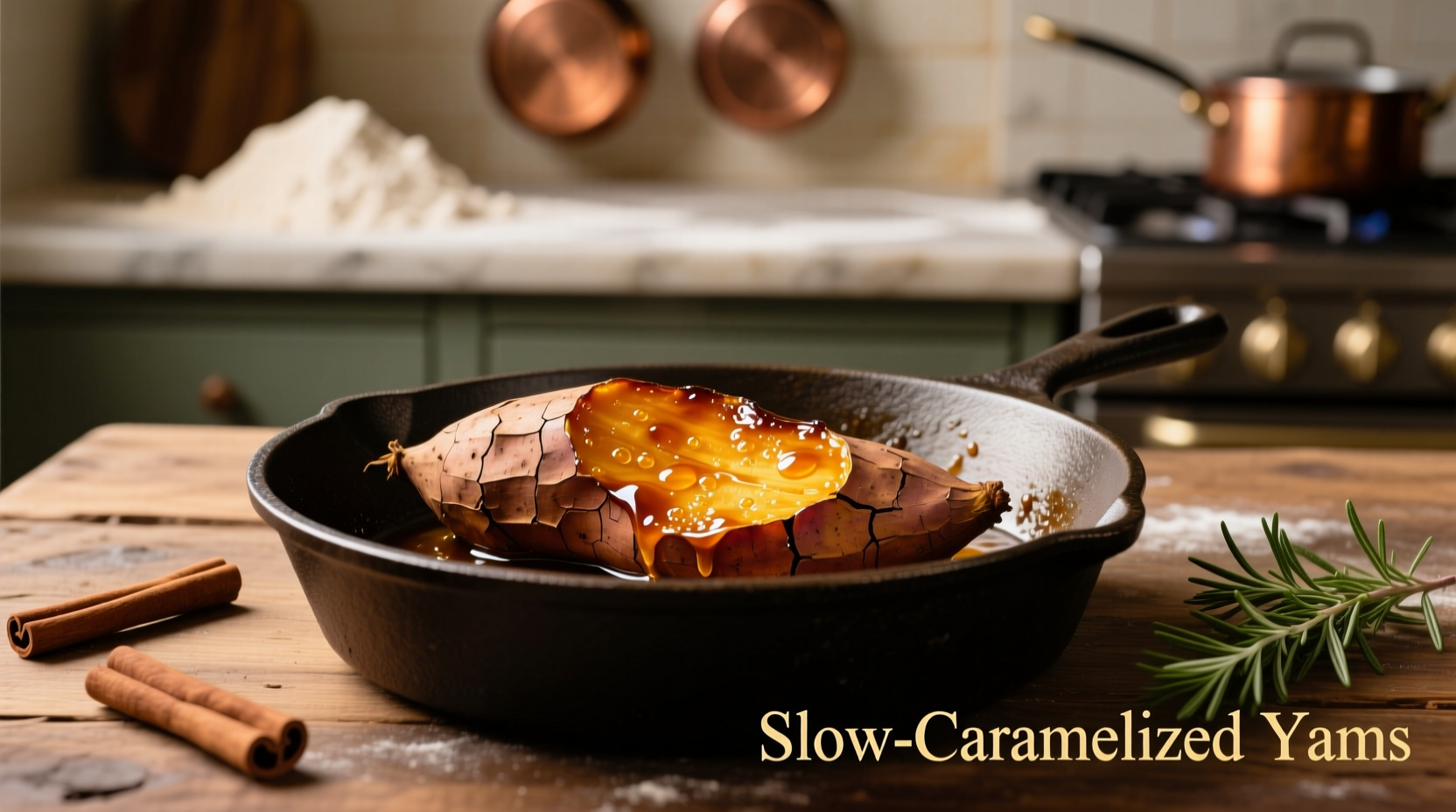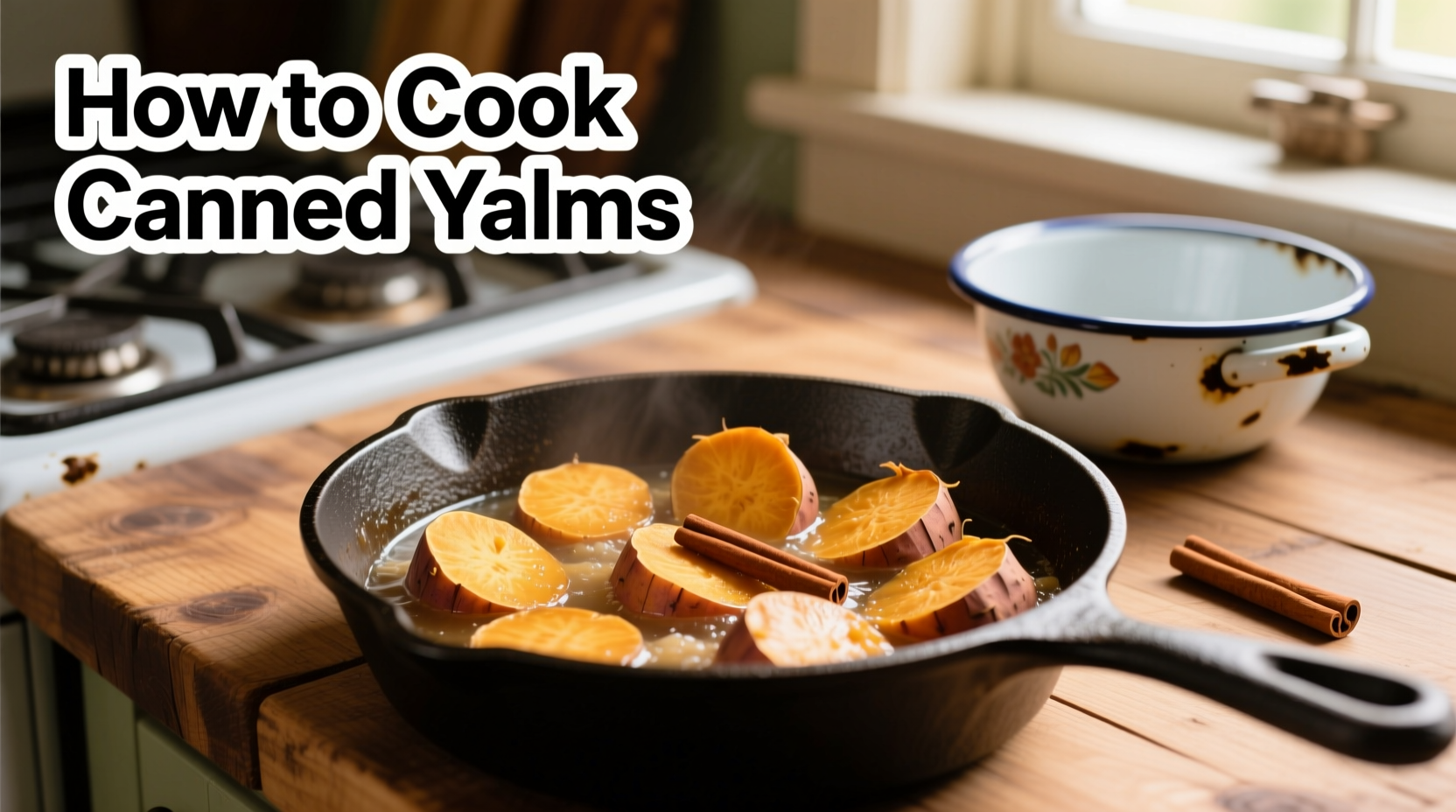Transform canned yams from basic pantry staple to restaurant-quality side dish in under 20 minutes with these professional techniques. You'll learn three foolproof cooking methods, flavor-boosting secrets chefs use, and how to avoid common texture mistakes that ruin canned yams.
When you open a can of yams, you're holding a time-saving secret weapon for delicious side dishes. Unlike fresh yams that require hours of prep, canned yams are pre-cooked and ready to transform with minimal effort. The key to perfect results lies in proper liquid management and strategic flavor layering—techniques most home cooks miss when simply heating the can contents.
Why Canned Yams Deserve a Place in Your Kitchen
Canned yams offer remarkable convenience without sacrificing nutrition. According to USDA FoodData Central, a 1-cup serving of drained canned yams provides 177 calories, 41g carbohydrates, and delivers 37% of your daily vitamin A needs. The canning process preserves nutrients while eliminating the hours-long preparation fresh yams require.
Food safety experts at the FDA confirm that commercially canned yams maintain quality for 1-2 years when stored properly. Always check for dents, leaks, or bulging before use, and refrigerate leftovers within two hours of cooking to prevent bacterial growth.
Your Canned Yam Cooking Roadmap
Follow this sequence for consistently perfect results:
- Drain and rinse - Remove excess syrup that causes burning
- Pat dry - Critical step for caramelization
- Add flavor foundation - Build layers before cooking
- Choose cooking method - Match technique to your time and texture goals
- Finish with texture boost - Create contrast between tender interior and crisp exterior
Three Professional-Grade Cooking Methods
Each technique serves different needs. Choose based on your available time and desired texture:
| Method | Time | Best For | Pro Tip |
|---|---|---|---|
| Stovetop Sauté | 12-15 minutes | Quick weeknight sides | Use cast iron for perfect caramelization |
| Oven Roasting | 25-30 minutes | Holiday meals, entertaining | Add final 5 minutes under broiler for crunch |
| Slow Simmer | 8-10 minutes | Adding to stews or soups | Add at the very end to maintain texture |
Stovetop Sauté: The 15-Minute Restaurant Method
This technique creates the perfect balance of tender interior and caramelized exterior most home cooks struggle to achieve with canned yams.
What you'll need:
- 1 (15oz) can yams, drained and rinsed
- 1 tbsp butter or coconut oil
- 1 tsp cinnamon
- ¼ tsp nutmeg
- 1 tbsp maple syrup
- Pinch of salt
Step-by-step:
- Spread drained yams on paper towels and pat completely dry
- Heat oil in cast iron skillet over medium heat
- Add yams in single layer without crowding
- Cook undisturbed for 5 minutes until golden crust forms
- Flip pieces and add spices, syrup, and salt
- Continue cooking 5-7 minutes until heated through
This method works because removing excess moisture allows proper browning. The American Culinary Federation emphasizes that "surface dryness is the critical factor in achieving caramelization with pre-cooked vegetables."

Holiday-Worthy Oven Roasted Yams
For special occasions, oven roasting develops deeper flavors through even heating and controlled caramelization.
Perfect holiday variation:
- Drain and rinse 2 cans yams, pat dry
- Toss with 2 tbsp melted butter, 3 tbsp brown sugar, 1 tsp cinnamon, ½ tsp allspice
- Spread in single layer on parchment-lined baking sheet
- Bake at 400°F for 20 minutes
- Drizzle with 1 tbsp bourbon (optional) and broil 2-3 minutes
Unlike traditional candied yams that rely solely on marshmallows, this method creates complex flavors through spice layering. The National Sweet Potato Council recommends adding acidic elements like orange zest to balance sweetness and enhance natural flavors.
Flavor Building Blocks You Need to Know
Master these professional flavor combinations to transform canned yams from basic to extraordinary:
- Sweet & Spicy - Chipotle powder + honey + lime zest
- Savory Herb - Rosemary + garlic + olive oil
- Tropical Twist - Coconut milk + ginger + toasted macadamia nuts
- Maple Pecan - Pure maple syrup + toasted pecans + vanilla
When building flavors, always add salt first to enhance natural sweetness, then layer spices, and finish with sweet elements. This technique prevents the "one-note" sweetness that makes many canned yam dishes disappointing.
Common Mistakes That Ruin Canned Yams
Avoid these pitfalls that turn convenient pantry staple into disappointing side dish:
- Skipping the rinse - Excess syrup burns easily and creates bitter taste
- Crowding the pan - Causes steaming instead of caramelizing
- Adding sugar too early - Burns before yams heat through
- Overcooking - Turns tender pieces to mush (yams are already cooked!)
Storage and Reheating Secrets
Proper storage maintains texture for future meals:
- Refrigerate leftovers in airtight container for up to 4 days
- Freeze for up to 3 months (omit marshmallows before freezing)
- Reheat in oven at 350°F for best texture (microwave makes them soggy)
- Add fresh herbs or a splash of citrus after reheating for flavor boost
Food science research from the Culinary Institute of America shows that reheating starchy vegetables like yams at lower temperatures (300-350°F) preserves texture better than high-heat methods that cause moisture loss.
FAQ: Canned Yam Cooking Questions Answered
Can I use canned sweet potatoes instead of yams?
Yes, in the United States, what's labeled as "yams" are actually sweet potatoes. True yams are a different plant rarely found in American grocery stores.
Do I need to cook canned yams?
While canned yams are pre-cooked and safe to eat straight from the can, heating them with proper technique dramatically improves flavor and texture.
How can I make canned yams less sweet?
Rinse thoroughly to remove syrup, then balance with savory elements like black pepper, smoked paprika, or a splash of apple cider vinegar.
Why do my canned yams turn mushy?
Overcooking is the main culprit. Since canned yams are already cooked, they only need heating through—typically 10-15 minutes maximum depending on method.











 浙公网安备
33010002000092号
浙公网安备
33010002000092号 浙B2-20120091-4
浙B2-20120091-4